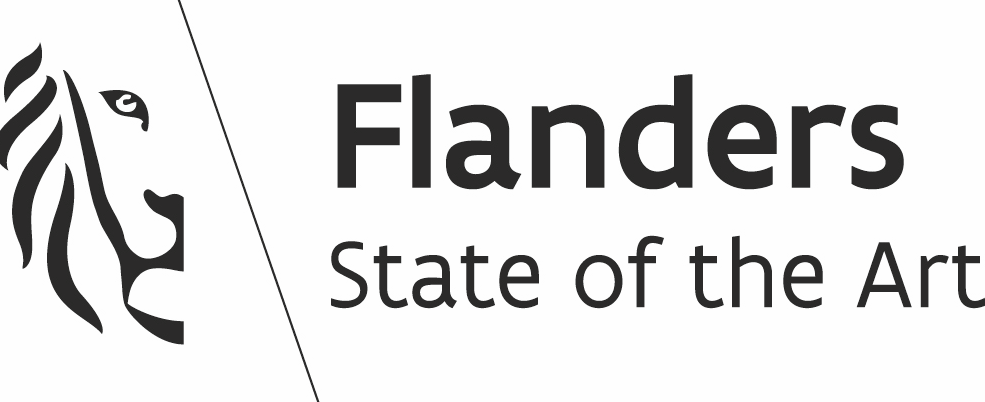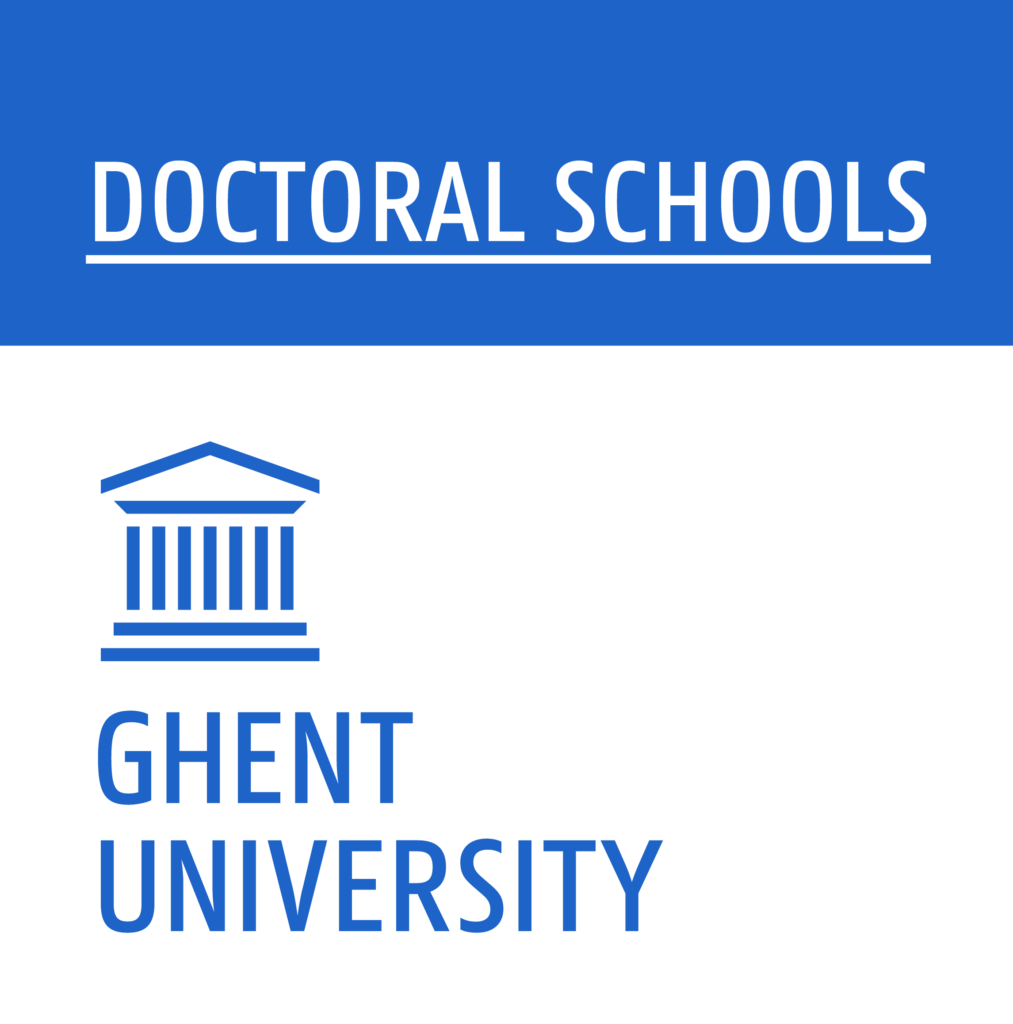The seminar series are funded by the
Flemish Government and
UGent Doctoral School.


Starting in academic year 2013/2014, the research group hosts a regular series of seminars, dedicated to our wide audience that includes physicists, students and engineers. These seminars feature excellent overviews presented by distinguished speakers and provide high value educational material for students . They prove to be the optimal venue for fruitful discussions between external experts and the group members. These seminars organised with the support of the Flemish Government. and UGent Doctoral Schools.
The program for academic year 2022-2023 can be found below:
May 23th, 2024
(11:00, Campus Proeftuin (INW) – N3, first floor, meeting room)
Speaker: Juliana Stachurska (Ghent University).
Towards the determination of the absolute neutrino mass scale with Project 8
Project 8 is a next-generation experiment aiming to directly measure the neutrino mass using the tritium endpoint method. In order to cover the entire allowed region of effective electron neutrino mass in the case of an inverted neutrino mass hierarchy, Project 8 targets a sensitivity of 40 meV. The development of new technology and methods are required to reach this unprecedented sensitivity. Among these are the development of Cyclotron Radiation Emission Spectroscopy (CRES), a non-destructive method of measuring the differential energy spectrum of decay electrons established by Project 8, and the development of an atomic tritium source to overcome the statistic and systematic limitations associated with molecular tritium. Following our recent publication of the first neutrino mass upper limit extraction with CRES, we are now focusing the development of CRES on large-volume detectors.
I will highlight the milestones already achieved, show recent design progress on the atomic source and a large-volume detector, and present our near-future R&D goals and associated demonstrators.
May 14th, 2024
(11:00, Campus Proeftuin (INW) – N3, first floor, meeting room)
Speaker: Giada Caneva (PhD candidate at Institut de Física d’Altes Energies).
Black hole spectroscopy: GR and beyond
According to the no-hair theorem, quasi-normal mode frequencies and damping times are exclusively determined by a black hole’s mass and spin. Black hole spectroscopy has shifted from theoretical conjecture to an empirical method for testing these assumptions using current LIGO-Virgo-KAGRA observations. We employ a time-domain analysis in an agnostic framework to identify multiple ringdown modes, and verify their agreement with Kerr solution predictions. Analyzing a “controlled” dataset of GW150914-like signals, we investigate deviations from General Relativity using Bayesian model comparison. We explore various scenarios, including how waveform systematics and data quality issues might lead to biased results or false claims of GR violation, and analyze beyond-GR signals, focusing on Kerr-Newman simulations as the most well-posed cases beyond GR.
May 7th, 2024
(11:00, Campus Proeftuin (INW) – N3, first floor, meeting room)
Speaker: Matteo Defranchis (CERN).
Overview of the Top quark mass measurements
April 30th, 2024
(11:00, Campus Proeftuin (INW) – N3, first floor, meeting room)
Speaker: Giada Caneva (PhD candidate at Institut de Física d’Altes Energies).
Top routes to the Higgs sector: a journey from the begin to the end of the Universe
In the standard model (SM) of particle physics, the Higgs boson is deeply related to the mechanism that creates the masses of elementary particles and, as such, has very characteristic properties, which are different from any other known particle. While the experimental results so far are consistent with a SM nature of the Higgs boson, it might well be part of an extended Higgs sector, which is predicted in many beyond-the-SM (BSM) scenarios that address mysteries the SM cannot explain. The large data samples collected at the CERN Large Hadron Collider (LHC), together with new analysis techniques, allow measurements of the Higgs boson properties at unprecedented precision as well as direct searches for additional Higgs bosons with highest reach. The results play a crucial role in probing the SM and provide a unique window to potential BSM effects. The coupling of the Higgs boson to the heaviest known quark, the top quark, is particularly exciting because it is large and, therefore, it plays a special role in the SM or possible BSM physics.
In the presentation, I will discuss different techniques to explore the Higgs sector using top quarks, and I will highlight two recent results: a measurement of Higgs boson production in association with top quarks (ttH and tH production), which provide direct probes of the top-Higgs coupling, in the bb decay channel of the Higgs boson; and a brand-new search for heavy additional Higgs bosons decaying to a Z boson and a top quark-antiquark pair (ttZ final state). The search accesses a mostly unexplored part of the Two Higgs Double Model (2HDM) parameter space that is relevant in models of baryogenesis and could explain the matter-antimatter asymmetry in the Universe.
April 26th, 2024
(11:00, Campus Proeftuin (INW) – N3, first floor, meeting room)
Speaker: Wim Walk (Einstein Telescope Collaboration Site Preparation Board).
Drilling Belgium and the Netherlands to Measure Gravitational Waves
Measuring gravitational waves allows us to study the universe in a new way. The Einstein Telescope (ET) is newly designed instrument that will increase the sensitivity of measuring these waves by a factor ~1000 compared by existing instruments. Assuming that the principle of gravitational waves and the benefits of measuring them are well understood by the audience, this presentation will focus on the geological investigations to investigate the feasibility of constructing ET in the Euroregion Meuse-Rhine (EMR) region. We expect a decision on where ET will be built sometime end 2026. To enable such a decision, a comprehensive technical program has been developed to characterise the EMR site and determine whether a subsurface trajectory is cost-effectively realisable to specifications. Investigations are required to demonstrate that the subsurface is of sufficient quality to construct at least one trajectory, including the excavation of tunnels, caverns and access shafts, within a specified budget. Furthermore, we need to establish that the selected trajectory is socially, politically and environmentally acceptable. Finally we need to show that the proposed trajectory can be expected to have an acceptable noise budget (gravitational disturbance) at the corner points for the instruments to perform to sensitivity requirements. In this presentation a selection of the current plans and activities to characterise the site will be discussed. Sub-surface measurements to establish rock quality and noise levels are described, including drilling boreholes, seismic, electrical resistivity and gravity measurements. In particular the drilling campaign that started last month is described and its purpose explained. At the end of the presentation a live video connection will be made to one of the current drill locations in Belgium, most likely Sint Pieters-Voeren.
March 19th, 2024
(11:00, Campus Proeftuin (INW) – N3, first floor, meeting room)
Speaker: Albert De Roeck (DUNE collaboration).
The DUNE Experiment: Neutrinos as a Gateway to the Origin of Matter
The Deep Underground Neutrino Experiment (DUNE) is a leading-edge, international experiment for neutrino science and proton decay studies. Experimental discoveries in the last decades have placed neutrinos in the spotlight to unlock the mysteries of the matter abundance unbalance in the Universe and the ultimate fate of the stars. DUNE is a leading-edge, international mega-science experiment for neutrino science and searches for physics beyond the Standard Model. DUNE will consist of two neutrino detectors placed in the world’s most intense neutrino beam. One detector will record particle interactions near the source of the beam, at Fermilab. A second, much larger, detector will be installed more than a kilometer underground at the SURF laboratory, in South Dakota — 1,300 kilometers downstream of the source. DUNE will use the state-of-the-art liquid-argon (LAr) TPC technology to instrument up to 70,000 tons of liquid argon at 87 K achieving millimetre-scale 3D precision.
In this seminar, we will review the status of the DUNE experiment and in particular the science of DUNE, which includes the determination of the neutrino mass ordering and the study of CP violation in the leptonic sector, together with the potential observation of supernova explosions, proton decay, precision studies of atmospheric and solar neutrinos, and searches for beyond the standard model physics making use the very intense proton driver beam.
December 14th, 2023
(09:30, Campus Proeftuin (INW) – N3 lecture room)
Speaker: Richard Ruiz (Institute of Nuclear Physics, Polish Academy of Science)
EWK unification and Higgs boson
The lecture dives into the main concepts of the electroweak symmetry breaking and the Higgs boson particle properties within the standard model (SM) of particle physics. We will touch upon the governing symmetries of the SM Lagrangian and write down the key equations that describe the fundamental interactions and properties.
October 24th, 2023
(11:00, Campus Proeftuin (INW) – N3, first floor, meeting room)
Speaker: Prof. Ketino Kaadze (Kansas State University)
The Tau Lepton as a Key to Understanding the Higgs Boson
The observation of the Higgs boson by the ATLAS and CMS experiments at the LHC has opened a new era for particle physics, where characterization of this new object is of crucial importance. Tau leptons are highly important for understanding the true nature of the Higgs boson. The di-tau decay of the Higgs boson is a key channel for direct measurement of Higgs to fermion couplings as well as for significant constraints of Higgs to vector boson couplings. These measurements allow testing CP-violating effects in the Higgs sector. In this talk, I will present recent results on observation of the Higgs boson decaying to a pair of tau leptons and on constraints of the Higgs couplings, as well as discuss future prospects for exploring the Higgs sector with di-tau decay mode.
October 10th, 2023
(11:00, Campus Proeftuin (INW) – N3, first floor, meeting room)
Speaker: Maria Lisa Brozzetti (University of Perugia)
GLADEnet: a progressive web app for multi-messenger cosmology and electromagnetic follow-ups of gravitational-wave sources
Multi-messenger astronomy has recently emerged as a significant field of research to unravel the physics governing the transients associated with the merger of binary systems of stellar compact objects. GW170817 is the first multi-messenger signal generated by the coalescence of a binary system of neutron stars detected by the LIGO and Virgo gravitational-wave interferometers and space-and-ground-based electromagnetic telescopes. It was a majestic example showing how multi-messenger observations significantly enhance our understanding of the physics of compact objects, relativistic outflows and nucleosynthesis. It showed a new way of making cosmology with the potential to resolve the tension between different measurements of the expansion rate of the Universe given by the Hubble constant. However, most of the detected gravitational-wave signals from compact binaries up to date do not have a multi-messenger counterpart, earning them the designation of dark standard sirens. In order to infer cosmological parameters using these signals without electromagnetic counterparts, statistical approaches are used by requiring the knowledge of galaxies within the event localization volume. For this type of study, as well as for optimizing observational strategies or evaluating the efficiency of the searches for counterparts over large sky-localization, the use of galaxy catalogues and the knowledge of their completeness are of paramount importance Here, we describe a new interactive web tool, named GLADEnet, which enables us to evaluate galaxy incompleteness in real-time across the gravitational-wave sky-localization. This measurement is of particular importance when utilizing catalogues such as the GLADE (Galaxy List for the Advanced Detector Era) catalogue which comprises a collection of various catalogues. Hence, its completeness differs across different regions of the sky.
The talk will focus on the analysis steps to define a completeness coefficient and provide a short guide on how to use the web app detailing its functionalities geared towards managing the vast collection of over 22 million objects in GLADE. The completeness coefficient and the GLADE galaxy list will be disseminated in real-time via GLADEnet powered by the Virtual Observatory (VO) standard and tools.